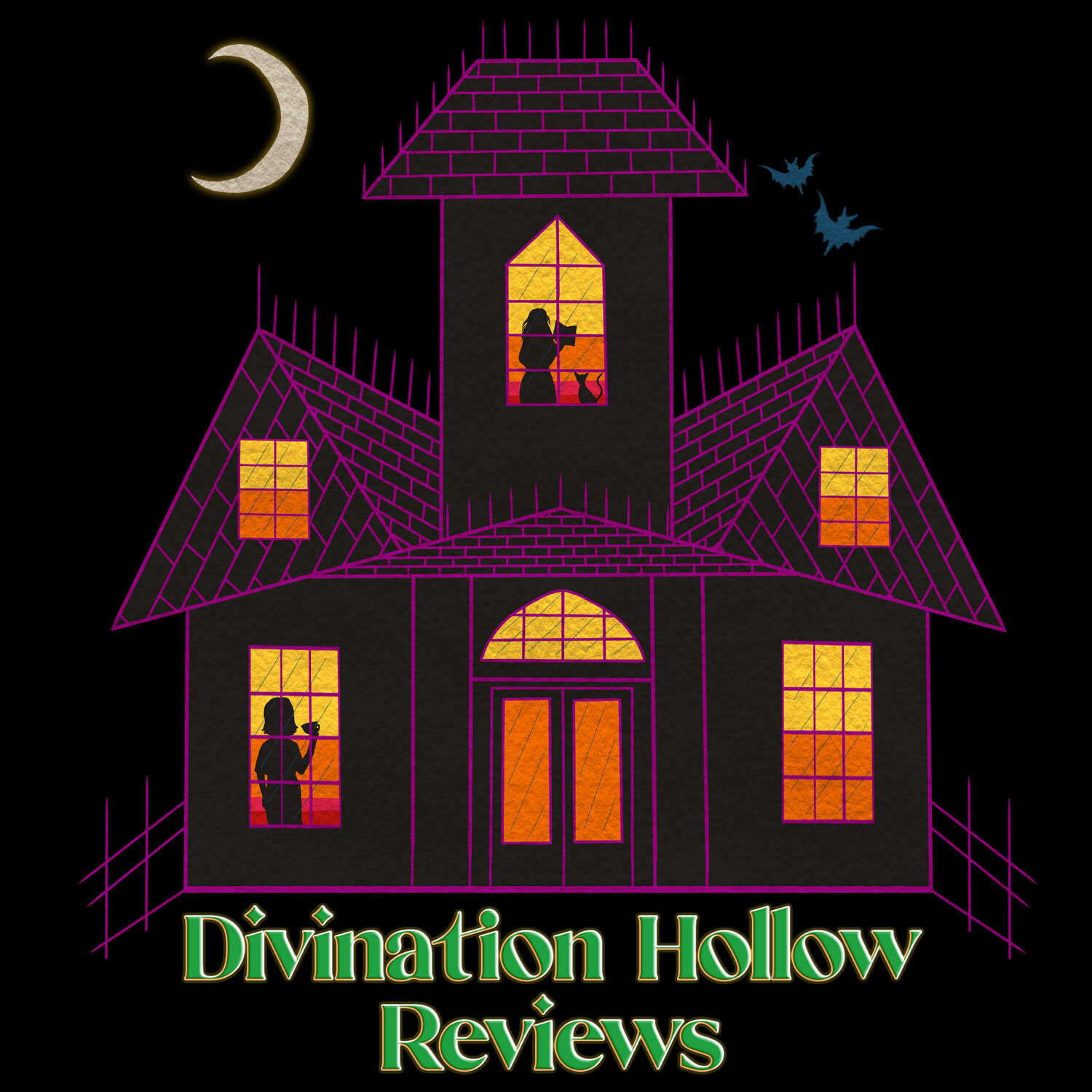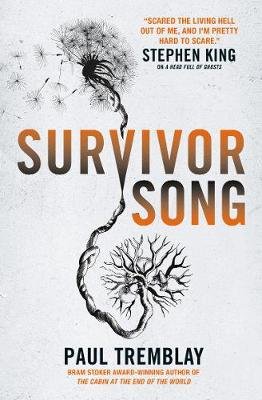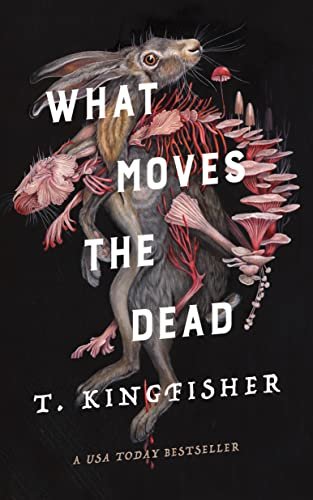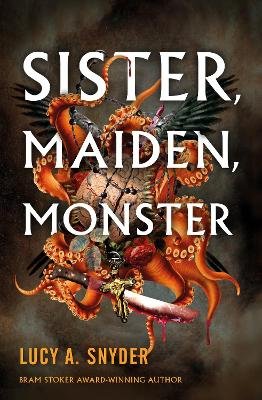PIHM: The Asexual Horror Boom!
Many in the queer community and beyond will know aces for their cuddly reputation. Take, for example, all the ace merchandise reading, “We’d rather eat cake”. The ace’s non-threatening, non-sexual disposition can even fall into infantilisation, with an aphobic assumption that aces “just haven’t met the right person”. So why, then, in the last five years has there been such an explosion of asexuality and aromanticism in horror fiction? You might fear that aces – and here I use “ace” to encompass asexual and/or aromantic sexualities – in horror are the ultimate damsel in distress, furthering this infantilised ideal, but not so. Aces have been making the perfect monsters – and the monsters have been winning! In this editorial, we’ll look at some of the tropes undergoing a current ace takeover in horror, with plenty of recommendations for folks looking for a dark ace fix.
Asexuality and Childhood Trauma Fiction
Once you get past the absence of sexual or romantic desire and really think about what an ace takeover could do to various pillars of the heteronormative human experience – right the way to the propagation of the continuing human species – aces actually start to look pretty sinister. Maybe that’s why asexuality is starting to feature so prominently in narratives about the horrors of parenthood and trauma associated with childhood and upbringing.
Take, for example, the asexual main character of Mothered by Zoje Stage. This is a story all about dealing with childhood trauma, both real and imagined, and Stage’s MC wonders about her own future motherhood and how that could take place outside of a standard heteronormative relationship. We see here some movement towards found families based in queer identities, whilst the horror carries on in the foreground of the biological family.
Similarly, in Survivor Song by Paul Tremblay, an ace narrator works through the trauma of trying to get her pregnant friend through a seemingly apocalyptic rabies epidemic. Although the reference to Ramola’s sexuality is brief, it is pitted against the fear and horror of reproducing in a world that seems hostile to the heteronormative family unit, and Rams is positioned as a potential future mother to her friend Natalie’s baby if she is taken by the fatal disease.
Finally, Just Like Home by Sarah Gailey features a protagonist whose aceness may be inferred by her reaction to the come-ons of other characters, in a way many ace readers may find familiar. Vera returns to her traumatic family home as her mother is dying, confronting the dark past of her childhood and position as the daughter of a serial killer. Gailey juxtaposes a lack of sexuality in Vera with the closing off of a diseased or disordered family line. Here ace identities work to close down undesirable aspects of humanity, but are nevertheless horrific.
Super Unsexy Mushrooms
For anyone not familiar with asexuality as a human sexuality, the term ‘asexual’ is likely to bring about images from a David Attenborough documentary about slugs mating with themselves. (No? Just me?) The term ‘asexual’ was used to describe a kind of reproduction in certain animals and plants in which offspring is produced with only one parent, and this definition existed long before it was used to describe a lack of sexual attraction in humans. Several writers seem to be using this duality of meaning to inspire their ace horror.
It’s perhaps most broadly used in sporror (spore-horror – all of the mushrooms!), which has seen a massive boom in the last couple of years – enough that it’s got its own portmanteau! What Moves the Dead by T. Kingfisher is a fantastic example, working not just with ace identities, but with non-binary and beyond binary genders. This update of Edgar Allan Poe’s “The Fall of the House of Usher” imagines a land that uses multiple pronouns that relate to function or career as well as gender. It also uses some hella creepy mushrooms to reanimate potential love interests, following the cordyceps speculative horror started by M.R. Carey in The Girl with All the Gifts.
Another great new addition to ace sporror is this year’s The Once Yellow House by Gemma Amor. Here a prominent secondary character explicitly identifies as ace, but the story is far from sexless. The strange mutations and/or hallucinations, potentially caused by the black mould that covers the walls of the Once Yellow House, throw into relief the strangeness of sex as perceived by many asexual folks. The body horror and surreality of the sex included by Amor takes our question, “Are the allos okay?” to new extremes.
The Alien Asexual Revolution
But spores aren’t the only monsters asexually reproducing – the aliens are at it too! In Leech by Hiron Ennes, a hivemind parasite has taken over the minds and bodies of medical professionals around the globe in a post-apocalyptic Earth. The aliens are genderless and sexless, biologically changing their host bodies to erase these aspects, and they are very determined to keep their hold on humanity. There is an interesting tension here between the ‘easiness’ of a lack of attraction, enabling the alien hosts to focus on research and innovation, and the desire to feel ‘fully’ human by reinstating gender and sexuality. I can’t speak for all aces, but there have definitely been times when I’ve felt like an alien species!
Similarly, in Lucy A. Snyder’s recent bestseller Sister, Maiden, Monster, only one of the three narrating characters (aptly enough, the ‘monster’) identifies as asexual, but monstrous asexuality and the body horror of sex permeates throughout the novel. I see Sister, Maiden, Monster as an ace apocalypse of biblical proportions, and beyond having great and fascinating ace representation, it’s one of those books that keeps you guessing about what the heck you’re actually reading right the way through the story.
I’ve tried to focus here on novels that have ‘out’ (usually self-declared) ace characters, and I think the sheer number of them is so exciting considering how erased ace identities have been in fiction in general up to this point. There are still other (particularly Gothic) books that seem to work with implied asexuality or aromanticism, such as The Death of Jane Laurence by Caitlin Starling, or Mexican Gothic by Silvia Moreno-Garcia. In many respects, horror is the perfect home for asexuality. As horror moves away from its politically conservative roots into an age of what Dr. Simon Bacon ‘aspirational horror’, asexuality and asexual monsters provide the perfect lens for the queer apocalypse. Aces are the insidious disruption to heteronormativity that no one saw coming, passing under the radar but giving a perspective on sex, relationships, and reproduction that brings their horror and uncanniness into a razor-sharp focus.






